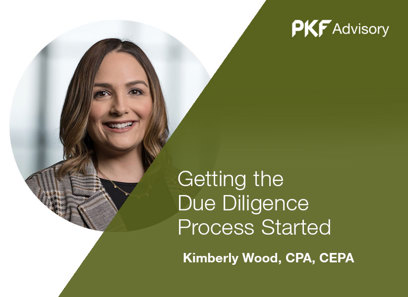Analyzing Purchase Price Allocation in Mergers and Acquisitions for Professionals
Wiki Article
The Critical Role of Understanding Purchase Price Allocation in Mergers and Acquisitions Explained
The procedure of Purchase Price Allocation (PPA) plays a pivotal role in the landscape of mergers and purchases, affecting not only financial reporting but likewise tax obligation approaches and stakeholder assumptions. A nuanced understanding of PPA can substantially affect an acquiring firm's economic health and wellness, making its exact implementation essential for long-lasting success. Understanding Purchase Price Allocation. The intricacies included in valuing recognizable assets and liabilities typically lead to difficulties that companies must navigate very carefully. As we check out the intricacies of PPA, it comes to be evident that the stakes are high, increasing important inquiries concerning best methods and compliance standards.Interpretation of Purchase Price Allocation
Acquisition rate allocation (PPA) is a vital procedure in mergings and acquisitions that involves dispersing the complete purchase cost among the different identifiable properties and obligations obtained in a transaction. This allowance is necessary for precisely mirroring the reasonable value of the gotten entity's assets and obligations on the balance sheet of the obtaining business.The PPA process usually starts with the recognition of all tangible and abstract properties, in addition to any type of obligations assumed throughout the acquisition. Concrete possessions may include residential property, equipment, and inventory, while abstract properties frequently encompass trademarks, patents, and goodwill. Each possession and liability need to be determined and valued to ensure that the allowance mirrors their fair market value at the purchase date.
The resulting allowance impacts financial reporting and can affect future revenues with amortization and devaluation of intangible possessions. Furthermore, precise PPA is crucial for conformity with accounting requirements, such as International Financial Coverage Standards (IFRS) and Normally Accepted Bookkeeping Principles (GAAP) As a result, a well-executed PPA procedure is essential to giving stakeholders with a clear economic image of the deal's effect.
Importance of Accurate Assessment
Accurate appraisal is critical in the purchase rate allowance process, as it straight affects the financial wellness and coverage of the getting company. An incorrect appraisal can lead to significant misstatements in economic statements, impacting stakeholder understandings and potentially leading to regulative analysis. Proper assessment ensures that the possessions and obligations gotten during a merger or procurement are videotaped at fair value, which is necessary for accurate financial coverage.Furthermore, specific assessment help in determining the goodwill created from the transaction, which is crucial for future problems screening. Stakeholders, consisting of capitalists and experts, rely upon the precision of these figures to evaluate the firm's efficiency and make informed choices. Unreliable assessments might result in overpaying for a procurement, causing diminished returns and a lack of count on from capitalists.
Additionally, the integration procedure counts on exact valuations to efficiently assign resources and manage the newly incorporated entity. Eventually, the value of exact assessment in acquisition cost allocation can not be overemphasized; it lays the foundation for transparency, functional performance, and long-term critical success within the joined company.
Tax Implications of PPA
In mergings and purchases, recognizing the tax implications of acquisition rate allotment (PPA) is necessary for both the acquiring company and the target entity. PPA determines exactly how the complete purchase price is distributed among various possessions and obligations, which significantly impacts the tax commitments of both parties included.The allowance directly influences the tax obligation deductibility of abstract and concrete possessions. Allocating a greater portion of the acquisition rate to depreciable or amortizable assets can generate significant tax advantages, enabling the getting firm to recoup costs over time via devaluation or amortization deductions. On the other hand, designating as well much to a good reputation, which is not amortizable for tax obligation functions, may lead to higher gross income in the future.
Misallocation or misconception of these properties can result in unanticipated tax obligation responsibilities, audits, or charges. Carrying out a detailed analysis of tax implications during the PPA process is critical to optimize financial outcomes and make sure compliance with relevant tax obligation regulations.
Conformity With Financial Requirements

Entities involved in M&An activities must thoroughly assess the fair worth of recognizable intangible assets, concrete assets, and responsibilities connected with the obtained entity. This assessment ought to be based in robust approaches, such as market, earnings, or price methods, guaranteeing that the allowances reflect the financial reality of the purchase.

Ideal Practices for PPA Execution
Effectively navigating the acquisition price allocation (PPA) procedure calls for the application of best techniques that enhance assessment and boost precision. One crucial method is involving knowledgeable appraisal professionals that are fluent in both economic and functional facets of the target business. Their proficiency is crucial for establishing reasonable values for identifiable properties and liabilities.An additional ideal technique involves complete due diligence. Purchase Price Allocation Accumulating comprehensive information on the target's properties, liabilities, and functional metrics permits an extra exact allocation of purchase price. Additionally, establishing a robust structure for evaluating intangible properties, such as brand name value and client relationships, is necessary to make certain that all relevant factors are considered.
Incorporating reliable communication among stakeholders, including financing, lawful, and operational groups, can better boost the PPA procedure. Regular updates and collaborative conversations help with a common understanding of appraisal techniques and assumptions.
Last but not least, keeping paperwork of the reasoning behind valuations and allocations is essential. This not just help in compliance with accounting requirements but likewise works as a reference for future audits or disputes. By sticking to these finest techniques, companies can achieve a much more exact and reliable PPA procedure.

Conclusion
Finally, recognizing purchase rate allocation is essential in mergers and purchases, as it directly influences economic reporting, tax obligations, and combination methods. Accurate assessment makes sure conformity with monetary criteria such as GAAP and IFRS, promoting trust amongst stakeholders. Applying finest methods in PPA not only boosts the monetary health of the obtaining company however also adds to effective deal end results. Hence, a comprehensive technique to PPA is vital for reliable administration of M&An activities.Report this wiki page